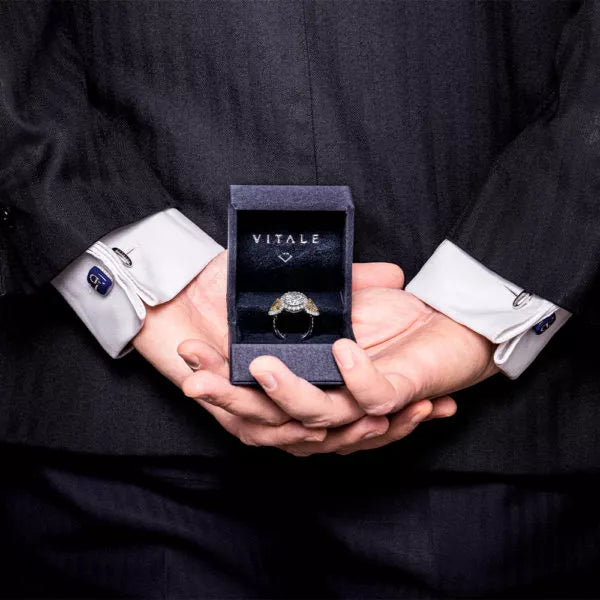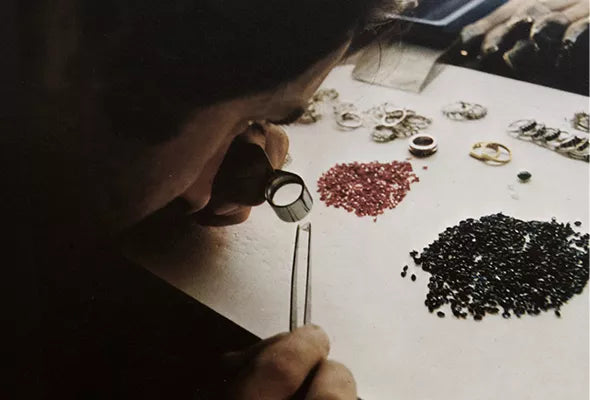Quality Factors
The value of opal can be judged and determined thanks to specific quality factors. The type, the color, the transparency, and the cut/ shape can significantly affect its value.
The type
The Opal family is divided into two categories: precious opal and common opal. Some of them are considered unique because they present the play of color. In contrast, common opals are translucent to opaque with a range of body colors (also called background) but no play-of-color. Tiny impurities cause the background in the silica’s structure.
In the precious opal category, we can have a white or black background. Black opal makes the play-of-color pops and is extremely attractive. They are rarer than the white ones, making them very popular.
Other types of opal are boulder opal, matrix opal, water opal. All of them are considered precious opal. Then there is fire opal, which is another category of opals. Fire opal has a color range from brownish-yellow, to orange, to reddish-orange.
Then we have what we call common opal, also known as “potch,” that doesn’t show iridescence and may be prized for pleasing body color. The types of common opals are dendritic opal, colored opal, cat’s eye opal, and finally, wood opal.
The color
Opal is highly famous for its shifting play of kaleidoscopic colors that is not present in other gems. As we have said earlier, the background color changes the value and the desirability of the opal. Still, there are opals without the iridescent rainbow pattern.
Red colors are the most desired ones in opal. However, red colors are the most desired ones in an opal.
The transparency
Transparency in opal is linked to its clarity and freedom from inclusions. It can range from completely transparent to opaque. In fact, in precious opal, we prefer black background because it highlights the play of color. While in crystal opal, we can admire the transparency. Every quality factor is based on the type of opal. But of course, a cloudy and milky background color lowers the value of any opal. Everything that makes an opal less attractive can also be a signal of a lack of stability.
However, opals can have fractures due to their delicate structure and might contain fragments of their host rock, called matrix.
The cut
Symmetry is fundamental in the cut and shape of opal, as it is in every gemstone. The cut, usually cabochon, as we said earlier, is based on the color, the pattern, and the clarity of the gem. Exceptional opals might not be cut to standard sizes ad shapes. In the cabochon cut, the dome must be well-rounded. The domed surfaces give the best play-of-color and make the stone appear vivid from the most viewing angles. Whereas, if the cabochon is flat, it might be vulnerable to breakage, especially during the setting into the jewelry. If it’s too high, it might be hard to set in the jewelry.
Only expert cutters can make an exquisite gemstone. Stonecutters generally cut top-quality rough to show off opal’s spectacular play-of-color. Effectively, fine opals might be cut into large and irregular shapes to keep as much play-of-color as possible. Typically these opals are set on unique and personalized custom pieces.
Cutters might also fashion some commercial-quality white opal and assemble opal into standard calibrated sizes, usually ovals.
The Geographic Origin
This wonderful gemstone is discovered in many places. Since Roman times, opals were mined near Czerwenitza in the Czech Republic. At that time, they didn’t know the existence of Australian mines. Nowadays, the primary sources of precious opal are New South Wales, South Australia, and Queensland in Australia. We can find white opal in the White Cliffs area of New South Wales and Mintabie, Coober Pedy, and Andamooka in South Australia. At the same time, Boulder opal can only come from one location in the world, which is Queensland. Australia is also famous for producing prized black opal.
Lightning Ridge is a dry and rocky area that gets little rain and bakes in the scorching summer temperatures.
There are other important sources such as Mexico, Ethiopia, and Brazil. Some deposits have been found in Honduras, Indonesia, Madagascar, the United States, Turkey, Peru, and Central Europe. For example, Mexico is the location where fire opal is mainly obtained.
To conclude, there are many facts to learn about opals, but we know that this gemstone is attractive for its beautiful colors, legends, and geographic origin. Each opal is a one-of-a-kind gemstone. You cannot find two that look the same. In fact, as world-renowned Australian opal expert Len Cram says, “Opal is like gold; once the fever is in your blood, you can never get it out.” Any opal cutter knows how right he is.
Written by Yolande Gennaoui





